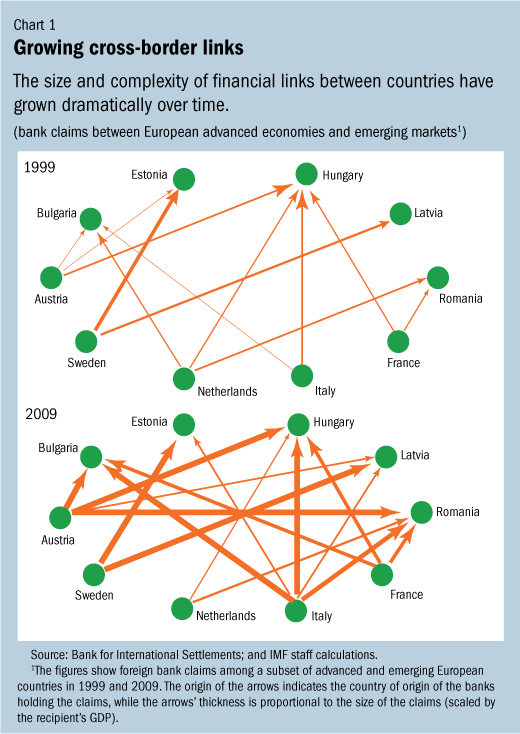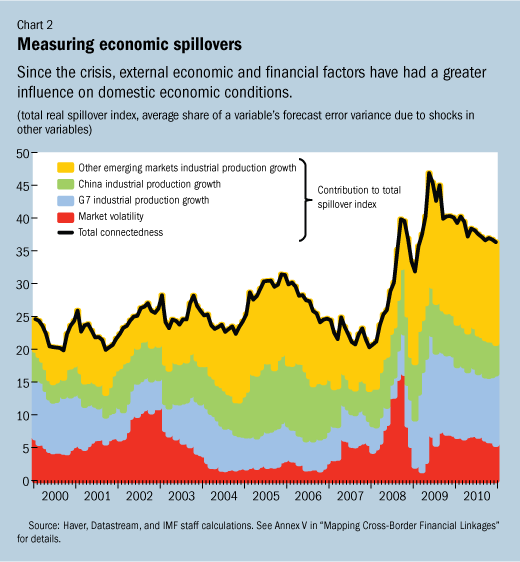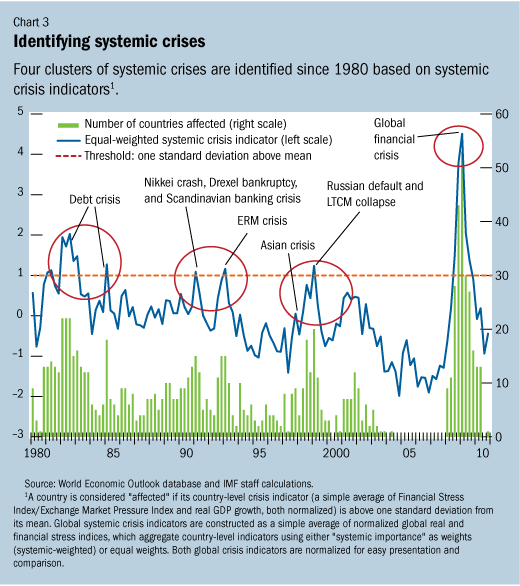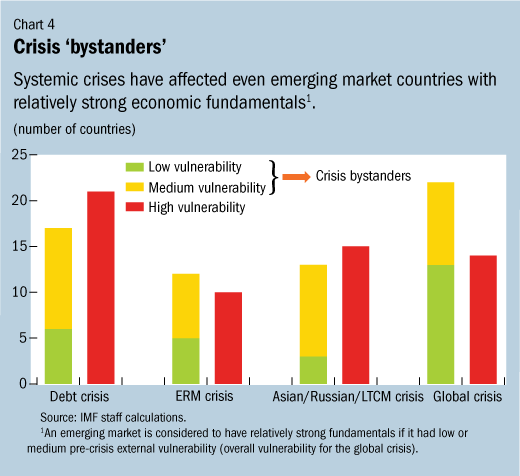
Typical street scene in Santa Ana, El Salvador. (Photo: iStock)
IMF Survey: IMF Continues Push Toward Enhanced Global Financial Safety Net
July 25, 2011
- Cross-border financial linkages could increase systemic risks
- Countries with strong fundamentals not immune to systemic crises
- Calls for stronger global financial safety net to assist crisis bystanders
New research by IMF staff outlines options—including an enhanced global financial safety net—to address crisis risks from the increasingly complex financial and economic links between countries and markets.

Paper’s findings support vision of Group of Twenty leading economies for enhanced global network of country insurance, lending tools (photo: Ed Jones/AFP)
CROSS-BORDER FINANCIAL LINKS
Responding to calls from the international community, IMF staff have taken a closer look at the incidence of, and relationship between, cross-border linkages and past systemic crises—that is, episodes where many countries suffer severe economic and financial distress.
The work is part of a broader IMF effort to make the international monetary system less prone to crisis. “We are now looking more carefully at the causes of such crises and the global liquidity responses to identify any remaining gaps in our lending toolkit,” said Reza Moghadam, Director of the IMF’s Strategy, Policy and Review Department, in an interview earlier this year.
Rising cross-border linkages and risks
The dramatic growth in cross-border financial linkages over time (see Chart 1) can prove a double-edged sword for countries.

The increasing size and complexity of financial linkages between countries can help diversify the risks that individual countries face by reducing exposure to domestic financial system shocks. At the same time, these financial linkages increase the risk of rapid and simultaneous shocks between countries, with dramatic consequences for economic conditions.
Prior to the global crisis, for example, there was very little variation in the degree to which economic conditions abroad would influence an individual country’s economy. When the crisis hit, however, these external factors suddenly became a much stronger driver of domestic economic conditions (see Chart 2).

Crisis ‘bystanders’
Based on a new indicator that identifies systemic crises by synthesizing financial and economic stress across countries, the analysis identifies four systemic crises since 1980: the 1982 Latin American debt crisis, the 1992/93 European Exchange Rate Mechanism (ERM) crisis, the Asian/Russian/Long Term Capital Management combined crises of the late 1990s, and the 2008 global financial crisis (see Chart 3).

The analysis confirms that large systemic crises even affect countries with relatively strong fundamentals that seem unlikely to be prone to an individual crisis. The global crisis had a particularly large number of such “bystander” countries (see Chart 4).
Lessons from past crises
Policy responses in past systemic crises were effective in providing liquidity. However, those responses were generally reactive and unpredictable, and mostly uncoordinated.

Key financial support—from the IMF, other international financial institutions, major central banks, and sometimes complemented by bilateral and regional financing and private sector support—was often delivered with a lag and for only a fraction of the crisis bystander countries.
The IMF has already taken steps to address this, significantly enhancing and increasing the flexibility of its lending toolkit since the crisis.
A better safety net
The findings support the vision of the Group of Twenty countries for an enhanced global network of country insurance and lending instruments on which countries could draw to cope with volatility and contagion from a crisis.
Providing rapid and adequate short-term liquidity to bystanders during systemic crises could bolster market confidence and reduce the overall cost of crises. Such action could help limit contagion and prevent a localized shock from becoming a full-blown systemic crisis. Increased coordination between the IMF and regional financing arrangements and more predictable liquidity provision—especially to crisis bystanders—would also strengthen the global financial safety net.
Exploring options for role of the Fund
The IMF could play a crucial role in improving the global financial safety net. Following its review of the latest analysis, the IMF’s Executive Board called for more work on options to further enhance the Fund’s lending toolkit. IMF staff will follow up with an assessment of the IMF’s existing lending instruments and consider proposals to fill any remaining gaps in the lending toolkit to address liquidity needs during systemic crises, keeping in mind calls from the Board to “embed safeguards and minimize moral hazard.”
Crisis prevention continues to be the IMF’s top priority and efforts are under way to strengthen both bilateral and multilateral surveillance. In this regard, the Executive Board underscored that “strengthening the global financial safety net goes hand in hand with efforts to better identify the buildup of system risks and improve crisis prevention.”


